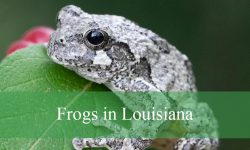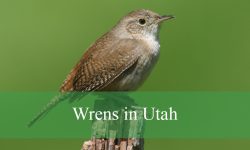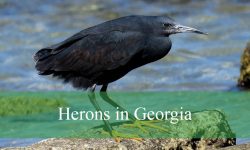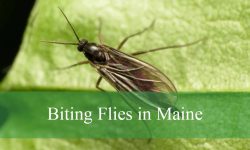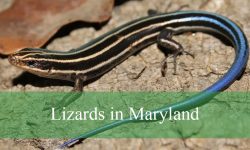A variety of frog species thrive in Iowa, from diminutive Spring Peepers to the impressive American Bullfrog, adding vibrant colors, sounds, and behaviors to local wetlands and forests.
Spring and early summer are the best times to hear frog choruses across ponds, marshes, and woodland pools. These sounds signal breeding activity and are a highlight for nature enthusiasts.
Frogs play an important role in Iowa’s ecosystems by controlling insect populations and serving as prey for birds, snakes, and mammals. Observing them provides insight into the state’s rich wetland biodiversity.
Different Types of Frogs Found in Iowa
American Green Tree Frog (Hyla cinerea)
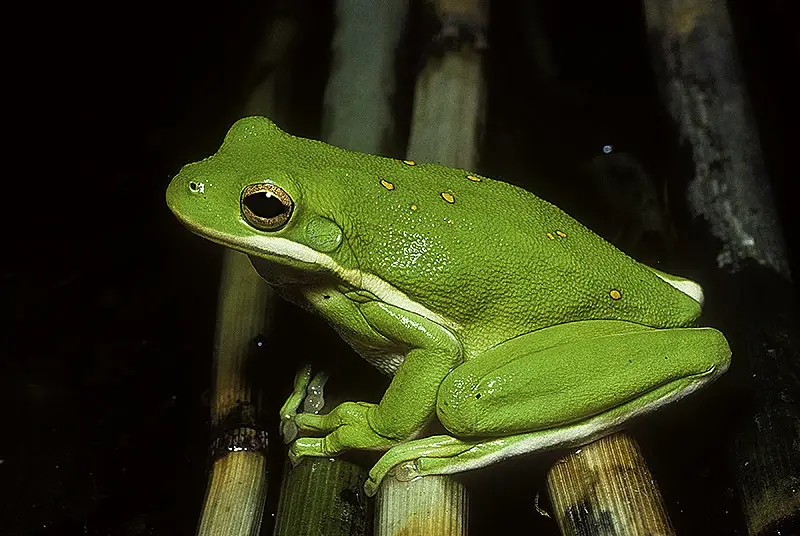
The American Green Tree Frog is a small, vibrant green frog with smooth skin and a white or yellowish stripe along each side. Its size ranges from 1.25 to 2.25 inches, making it one of Iowa’s tiniest tree frogs. Its bright color and tiny size make it easily recognizable among the foliage.
These frogs are highly arboreal, often found clinging to vegetation, shrubs, or the sides of buildings. They prefer moist areas near ponds, lakes, and marshes. They are most active during warm evenings and nights in spring and summer.
American Green Tree Frogs are nocturnal feeders, preying on small insects like flies, moths, and crickets. Their sticky tongue allows them to catch prey efficiently. They play a significant role in controlling insect populations in Iowa.
Their call is a distinct, high-pitched “quank” or “rreeek,” usually heard from trees and shrubs near water. Males call frequently during breeding season to attract females, particularly after rainfall.
Breeding occurs in late spring to summer in shallow water bodies. Females lay small clusters of eggs attached to aquatic vegetation. Tadpoles develop rapidly in warm water, transforming into juvenile frogs within a few weeks.
Cope’s Gray Tree Frog (Dryophytes chrysoscelis)
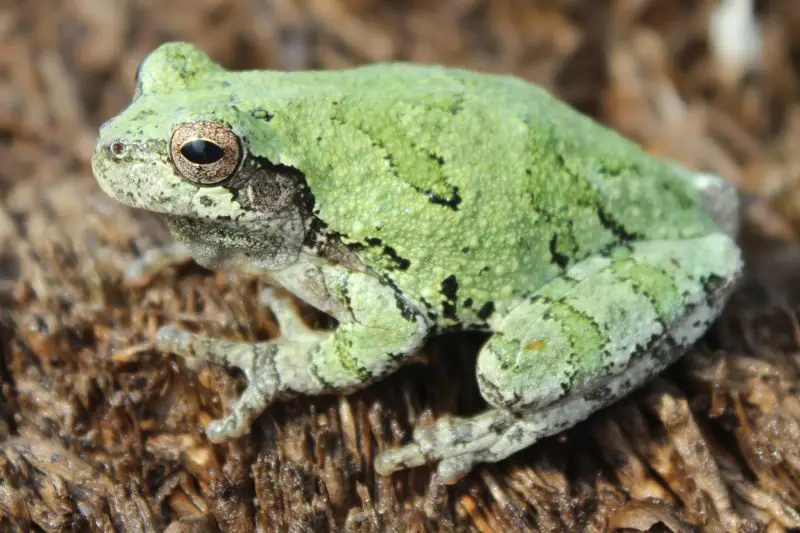
Cope’s Gray Tree Frog is a small frog with a gray or mottled green coloration, often changing shades to blend with bark or leaves. Its size ranges from 1.25 to 2 inches. It has warty skin and yellow patches on the inner thighs, visible during jumps.
They inhabit wooded areas, gardens, and wetlands. These frogs spend much of their time on trees, shrubs, and fence posts, descending mainly for breeding. They are excellent climbers, using their sticky toe pads for gripping surfaces.
Cope’s Gray Tree Frogs feed primarily on insects and spiders, hunting at night. Their camouflage provides protection against predators such as snakes and birds. They are most active on warm, humid nights.
Their call is a rapid, high-pitched trill lasting several seconds. Males call from trees or shrubs near water bodies, particularly in late spring and summer, to attract mates. The call can carry over long distances despite the frog’s small size.
Breeding takes place in temporary ponds, ditches, or slow-moving streams. Eggs are laid in clusters, and tadpoles develop within several weeks. They overwinter as adults hidden under leaf litter or in tree cavities.
Gray Tree Frog (Dryophytes versicolor)
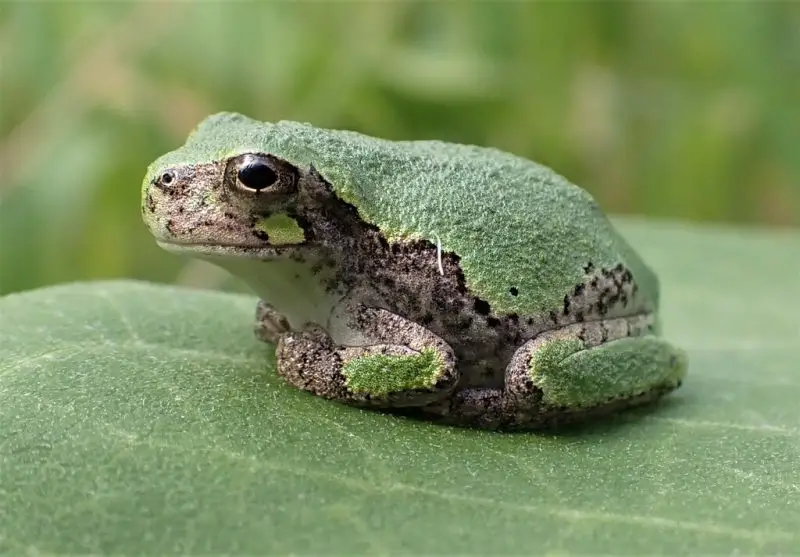
The Gray Tree Frog is similar in appearance to Cope’s Gray Tree Frog but is slightly larger, measuring 1.25 to 2.5 inches. Its coloration is highly variable, ranging from gray to green or brown, which helps it blend with tree bark. Yellow patches are present on the inner thighs.
These frogs prefer wooded areas, wetlands, and suburban gardens. They are arboreal but will descend to water bodies for breeding. They can often be found perched on tree trunks, shrubs, or siding of houses at night.
Gray Tree Frogs are nocturnal hunters, feeding on moths, beetles, ants, and other small insects. Their excellent camouflage helps them avoid predators during the day. They are an important part of Iowa’s insect control.
Their call is a slow, musical trill, lasting from 0.5 to 2 seconds, repeated at intervals. Males call from elevated perches to attract females, especially during spring and early summer rainy nights.
Breeding occurs in shallow ponds, temporary pools, and woodland pools. Eggs are deposited in small clusters attached to aquatic vegetation. Tadpoles develop in a few weeks, and juveniles climb into trees upon metamorphosis.
Spring Peeper (Pseudacris crucifer)
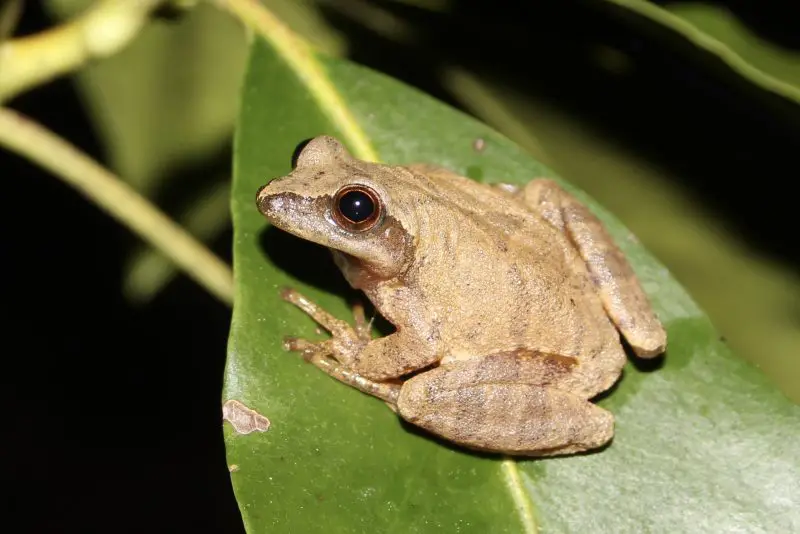
Spring Peepers are tiny frogs, usually about 1 to 1.5 inches long, with tan, brown, or reddish coloring. A distinctive dark “X” mark is present on their back, making them easily identifiable. Their small size and camouflage allow them to hide in leaf litter.
They inhabit woodlands, meadows, and wetlands, often near shallow pools or ponds. Spring Peepers spend most of their time on the ground or low vegetation but will climb shrubs during the breeding season.
These frogs feed mainly on ants, small beetles, and flies. They are nocturnal and emerge at night to hunt. Despite their small size, they are an essential food source for birds, snakes, and small mammals.
Spring Peepers are famous for their loud, high-pitched “peep” calls, especially during early spring. Their chorus can dominate nighttime soundscapes in Iowa wetlands, signaling the arrival of spring.
Breeding occurs in temporary woodland pools and ditches in March and April. Females lay eggs in clusters attached to submerged vegetation. Tadpoles develop in cool water and metamorphose in late spring.
Western Chorus Frog (Pseudacris triseriata)
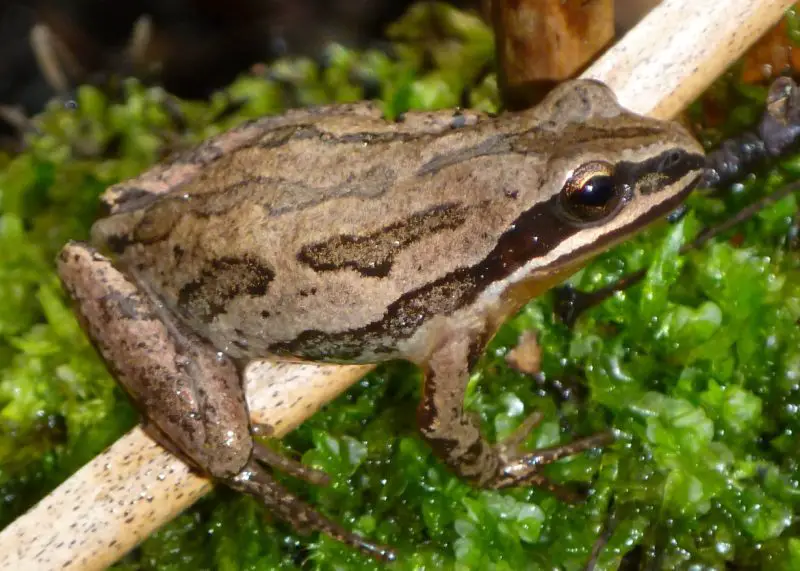
Western Chorus Frogs are small, ranging from 0.75 to 1.5 inches. Their coloration varies from gray to brown or greenish, with three distinct dark stripes running down the back. Their small size and stripes make them recognizable in Iowa wetlands.
They prefer shallow ponds, marshes, and wet meadows, often hiding among grasses and vegetation. They are primarily ground dwellers but may climb low shrubs occasionally. These frogs are abundant in both rural and suburban areas.
Western Chorus Frogs feed on ants, beetles, and other tiny insects. They are active at night and early morning, especially during the breeding season. They help control insect populations in wetland ecosystems.
Their call is a short, high-pitched “reeeek” or “crek,” repeated rapidly. The chorus is often heard during late winter to early spring, signaling one of the first frog calls of the season.
Breeding occurs in shallow, temporary pools in early spring. Females lay eggs in clusters attached to vegetation or debris in the water. Tadpoles develop quickly, often transforming into juvenile frogs before summer.
Northern Leopard Frog (Lithobates pipiens)
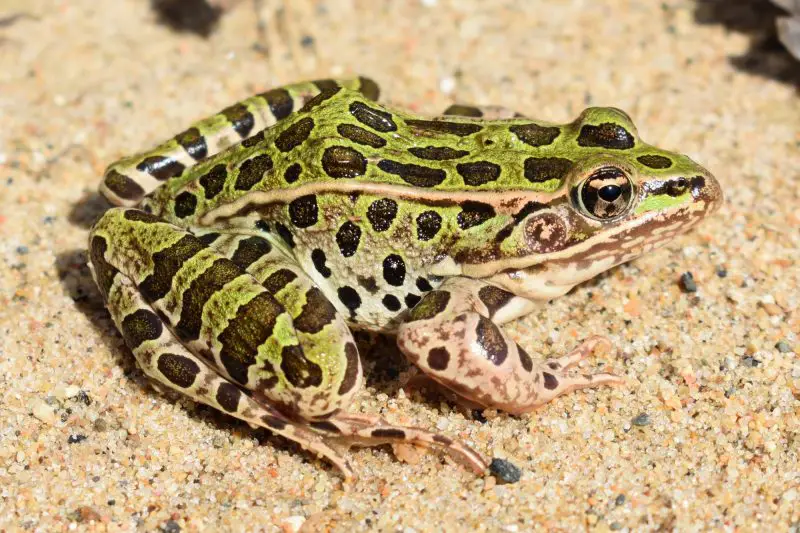
The Northern Leopard Frog is a medium-sized frog, typically 2 to 3.5 inches long, with a green or brown body covered in dark, round spots. Its long legs and slim body make it an excellent jumper. The green coloration and spotted pattern provide camouflage in grassy habitats.
They inhabit wetlands, meadows, and pond edges. Northern Leopard Frogs prefer shallow water with abundant vegetation but can also be found in grassy fields during foraging. They are often active during the day, unlike many other frogs.
Their diet consists mainly of insects, spiders, and other invertebrates. They are opportunistic feeders and will also eat smaller frogs. Their presence helps control insect populations in Iowa ecosystems.
Males produce a low, snore-like “krek-krek” call, particularly during the breeding season in spring. Choruses can be loud near marshes and ponds, attracting females to shallow breeding sites.
Breeding occurs in early spring, often in temporary ponds or slow-moving streams. Females lay eggs in clusters attached to submerged plants. Tadpoles develop over several weeks and metamorphose by late spring or early summer.
Southern Leopard Frog (Lithobates sphenocephalus)
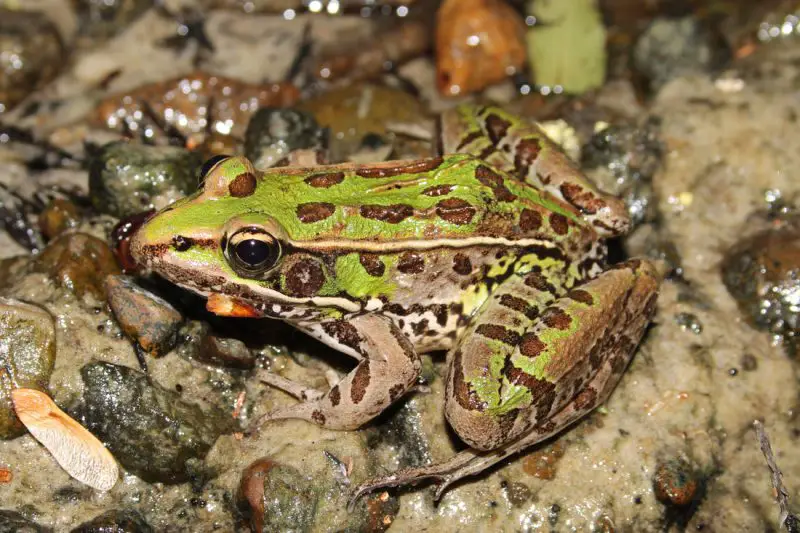
The Southern Leopard Frog is similar in appearance to the Northern Leopard Frog but has slightly larger, irregularly shaped spots and two prominent dorsolateral ridges running down the back. Adults range from 2 to 4 inches. Coloration varies from green to brown with a creamy or white belly.
They are found near ponds, marshes, and slow streams with abundant vegetation. These frogs are often more active on the ground, hopping among grasses and sedges. They prefer areas with permanent or semi-permanent water.
Southern Leopard Frogs feed on insects, spiders, and other invertebrates. They are effective hunters, using their long legs to leap onto prey. Predators include snakes, birds, and larger frogs.
Males emit a series of rapid, snore-like “ak-ak-ak” calls during spring and early summer. These calls help establish territories and attract females. Their chorus is often heard at night or during early morning.
Breeding takes place in shallow ponds or wetlands in early spring. Females lay eggs in clusters, often in water with floating vegetation. Tadpoles metamorphose in a few weeks, depending on water temperature and food availability.
Wood Frog (Lithobates sylvaticus)
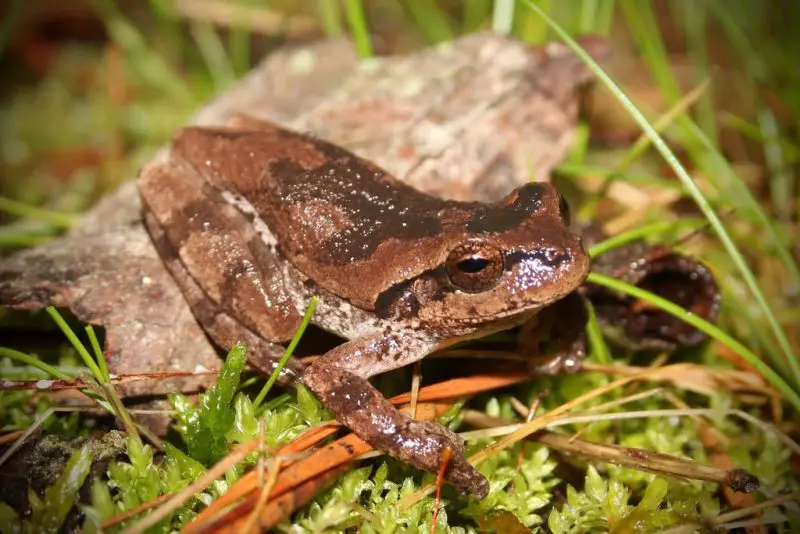
The Wood Frog is a medium-sized frog, about 2 to 3 inches long, with a distinctive dark mask extending from the eyes to the eardrum. Its body is typically tan or brown, blending well with leaf litter in forests. This camouflage helps it avoid predators.
They inhabit wooded areas, especially near vernal pools, wetlands, and forest edges. Wood Frogs are terrestrial for most of the year but return to water for breeding. They are one of the first frogs to become active in early spring.
Wood Frogs feed on insects, spiders, and other small invertebrates. Their feeding is mostly nocturnal but can occur during the day in damp conditions. They are preyed upon by snakes, birds, and small mammals.
Their call is a quacking “ribbit” or “cluck,” often heard during early spring, sometimes even when snow is still present. Males call from shallow pools or forest ponds to attract females.
Breeding occurs in temporary pools and vernal ponds in early spring. Eggs are laid in clusters attached to vegetation. Tadpoles develop quickly before the pools dry, usually transforming into juveniles in late spring.
American Bullfrog (Lithobates catesbeianus)
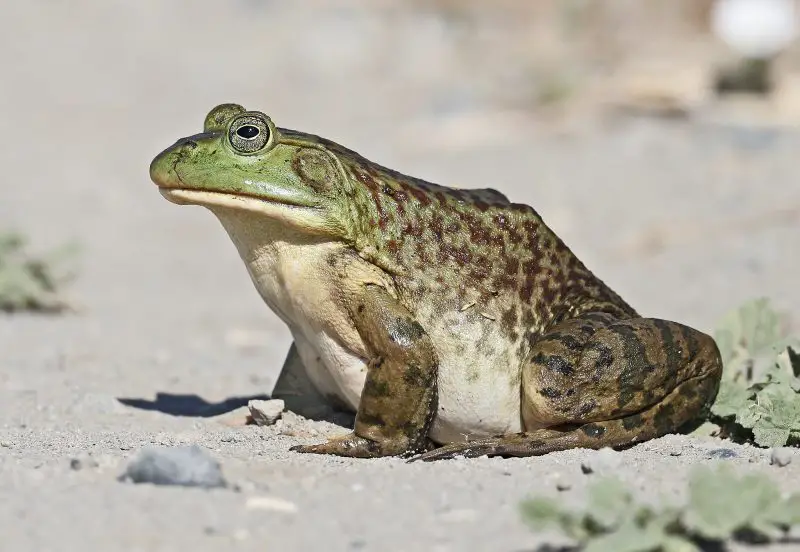
The American Bullfrog is the largest frog in Iowa, reaching 3.5 to 6 inches in length. Its color ranges from green to brown, with a pale belly and prominent eardrum. Large size and powerful legs make it an excellent jumper and predator.
Bullfrogs inhabit permanent ponds, lakes, and slow-moving rivers. They prefer areas with dense aquatic vegetation and shallow water edges. They are mostly aquatic but may occasionally venture onto land.
They are opportunistic feeders, consuming insects, small mammals, birds, fish, and even other frogs. Their large mouths allow them to tackle relatively large prey, making them apex amphibian predators in Iowa waters.
Males produce deep, resonant “jug-o-rum” calls that can carry over long distances. The calls are most prominent in summer and are used to attract females and defend territories.
Breeding occurs in late spring to early summer. Females lay thousands of eggs in floating clusters. Tadpoles take several months to over a year to metamorphose into adult frogs, depending on water temperature.
Green Frog (Lithobates clamitans)
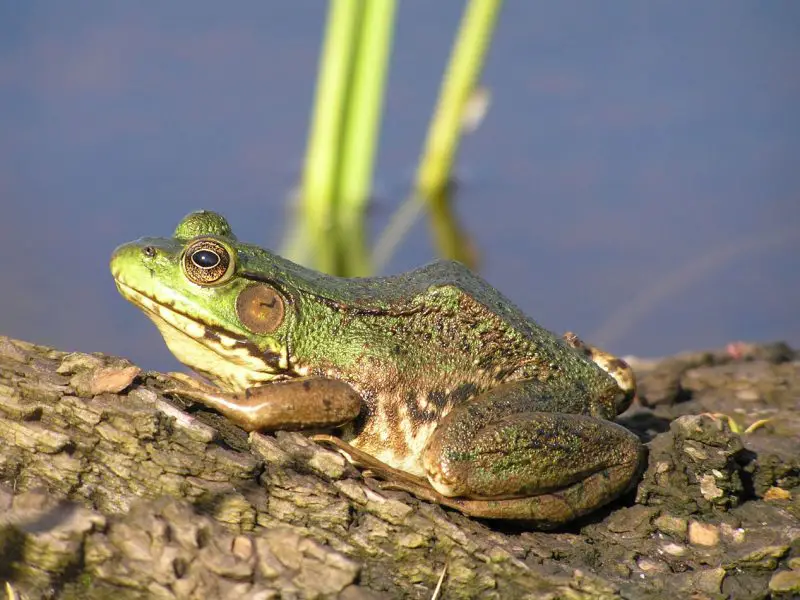
The Green Frog is a medium-sized frog, ranging from 2 to 4 inches. Its color varies from green to brown with darker mottling. A distinguishing feature is the dorsolateral ridges running from behind the eyes down the back.
They inhabit ponds, lakes, and marshes with abundant vegetation. Green Frogs are semi-aquatic, spending much of their time near water but occasionally venturing onto land to hunt or bask.
Green Frogs feed on insects, spiders, crayfish, and occasionally smaller frogs. They are active hunters and rely on stealth and sudden lunges to catch prey. Predators include birds, snakes, and larger aquatic animals.
Their call is a low-pitched “gunk-gunk” or “banjo-like” sound. Males call from the water’s edge or floating vegetation during the breeding season to attract females. The chorus is most prominent in late spring and summer.
Breeding occurs in shallow water from late spring to mid-summer. Eggs are laid in clusters attached to underwater plants. Tadpoles develop over several weeks, depending on environmental conditions, before emerging as juvenile frogs.
Blanchard’s Cricket Frog (Acris blanchardi)
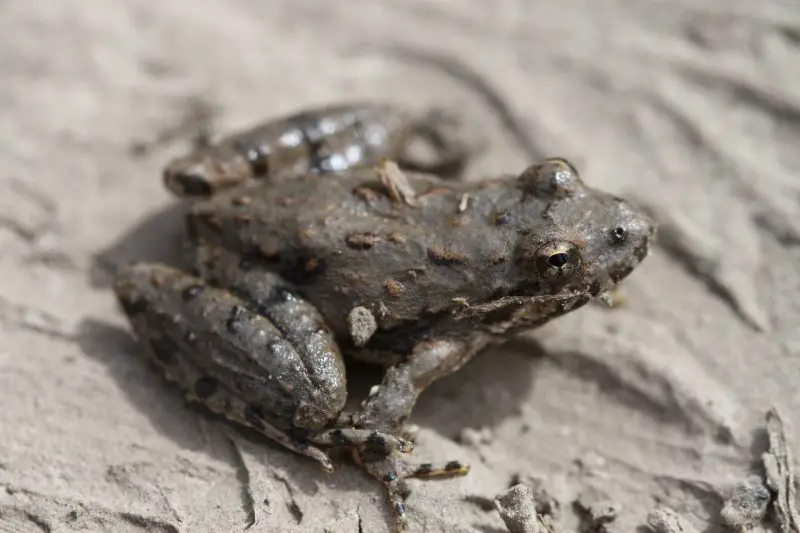
Blanchard’s Cricket Frog is a very small frog, usually only 0.75 to 1.25 inches long. Its body is gray, brown, or greenish, often with a distinctive triangular or V-shaped marking on the back. Its small size and unique markings make it easy to identify among Iowa’s wetland frogs.
These frogs prefer shallow, sunny wetlands, ponds, and marsh edges with abundant vegetation. They are highly terrestrial, often seen hopping along grassy banks or floating on vegetation. They are active during the day as well as at night.
Blanchard’s Cricket Frogs feed mainly on tiny insects, including ants, beetles, and flies. Their rapid movements and strong jumping ability help them catch prey efficiently. Predators include birds, snakes, and larger frogs.
Their call is a sharp, short “click” or “crick” sound, often repeated in rapid succession. The chorus is most noticeable during spring and early summer, especially near sunny shallow waters.
Breeding occurs from late spring through summer in shallow water. Females lay small clusters of eggs attached to submerged plants. Tadpoles develop quickly in warm water, often metamorphosing in a few weeks.
Pickerel Frog (Lithobates palustris)
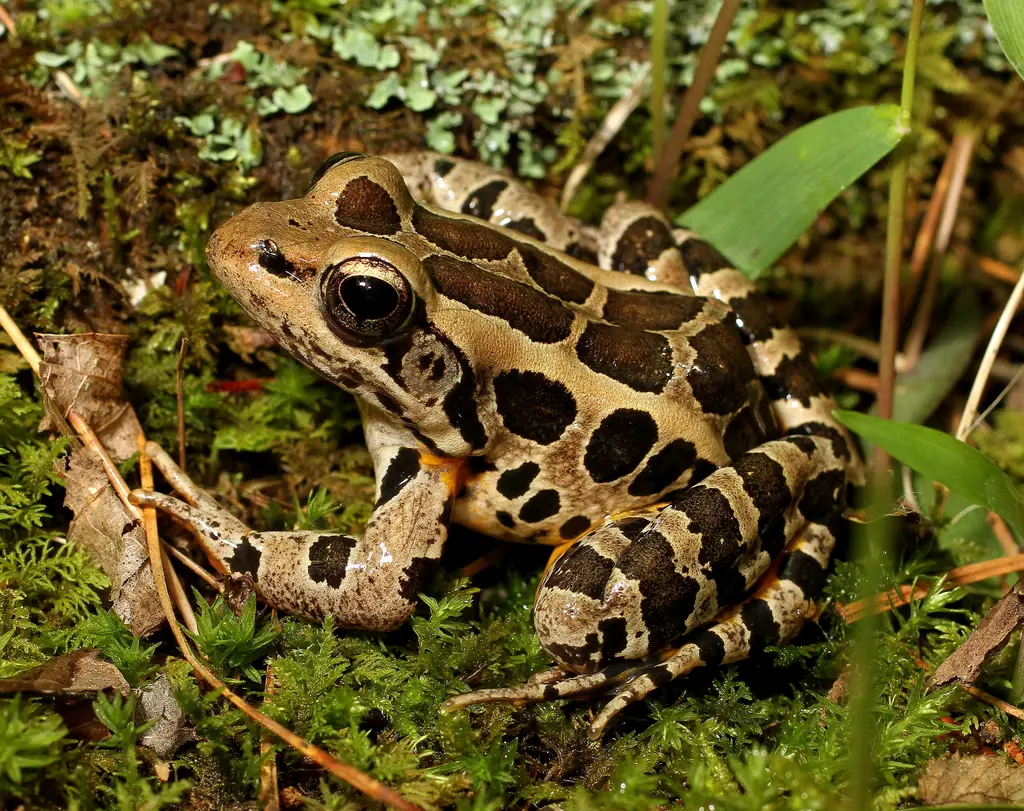
Pickerel Frogs are medium-sized frogs, usually 2 to 3 inches long. They are recognizable by their rectangular dark spots arranged in rows along the back and bright yellow or orange coloration on the inner thighs. Their robust body and distinctive markings make them easy to distinguish.
They inhabit cool, shallow streams, ponds, and wetlands with clear water and abundant vegetation. Pickerel Frogs are mostly terrestrial but require access to water for breeding. They prefer shaded areas with dense vegetation.
Their diet consists of insects, spiders, and other small invertebrates. They are effective hunters, using stealth and sudden lunges to capture prey. Their skin secretes mild toxins that deter some predators, including snakes and mammals.
Males produce a low, snore-like “unk-unk-unk” call during the breeding season. Calls are usually heard from shallow water or the edges of ponds and streams in spring and early summer.
Breeding occurs in shallow water from early spring through summer. Females lay eggs in clusters attached to submerged vegetation. Tadpoles develop over several weeks and metamorphose by mid-summer, completing their life cycle before winter.
Best Time and Places to Observe Iowa Frogs
Frogs in Iowa are most active during the spring and early summer months, typically from March through July, depending on the species and local weather conditions. Early spring is especially exciting because woodland species like Wood Frogs and Spring Peepers emerge first, often while snow is still on the ground.
Wetlands, ponds, marshes, and vernal pools provide the best habitats for observation. Frogs such as Northern Leopard Frogs and American Bullfrogs prefer larger ponds or lakes, while Cricket Frogs and Western Chorus Frogs can often be found in shallow, sunny waters with abundant vegetation.
Evening and nighttime visits are ideal for many species, as most frogs are nocturnal. Spring rains trigger choruses, so listen for calls after rainfall to locate different species. Daytime observation is possible for species like Blanchard’s Cricket Frog and Wood Frog, especially near sunny pools or edges of wetlands.
Urban and suburban areas with garden ponds, small wetlands, or backyards can also host species like Green Tree Frogs and Cope’s Gray Tree Frogs. Listening carefully near trees and shrubs at night will often reveal their high-pitched calls.
For a complete experience, bring a flashlight and wear waterproof boots. Observing quietly along pond edges, marsh trails, and forested vernal pools will maximize your chance of seeing a variety of species without disturbing them.
FAQs about Iowa Frogs
What is the most common frog in Iowa?
The Northern Leopard Frog is one of the most common and widely distributed species. Spring Peepers and Western Chorus Frogs are also frequently heard during spring.
When is the best time to hear frog calls in Iowa?
The best time is early spring after rainfall, typically from March to May, when breeding activity peaks and male frogs chorus loudly.
Are Iowa frogs safe to touch?
Most Iowa frogs are harmless, but it’s important to wash hands before and after handling them, as skin oils, chemicals, or bacteria can harm frogs and potentially irritate humans.
Which Iowa frog is the largest?
The American Bullfrog is the largest frog in Iowa, reaching up to 6 inches in length and is mostly found in permanent ponds and lakes.
Where can I observe rare frog species in Iowa?
Rare species like the Blanchard’s Cricket Frog or Pickerel Frog are best found in shallow, sunny wetlands, streams, and marsh edges. Early spring and early summer are ideal times for observation.
Do frogs in Iowa hibernate?
Yes, many species, including Wood Frogs, Northern Leopard Frogs, and Green Frogs, hibernate during winter, often buried under leaf litter, mud, or pond bottoms, emerging in early spring.

